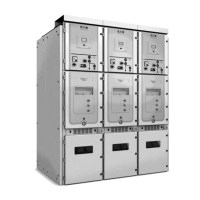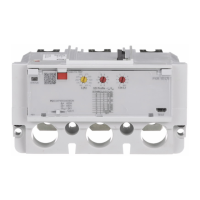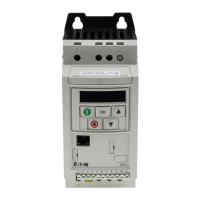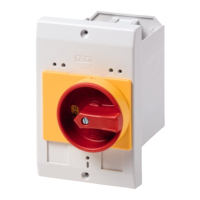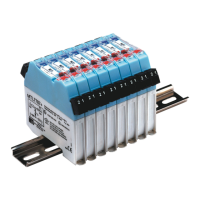Power Xpert
®
UX with W-VACi circuit breaker 6063308 G01 01 14 July 2011 www.eaton.com
- Escape routes
To the front and rear of the installation, and between two
installations sited opposite each other, an escape route at
least 0.5 m wide and 2 m high must be present over the
entire length of the installation. The width of the escape
route is measured from the part of the installation that
projects furthest. The escape route must be completely
clear and as far as possible in a straight line.
The installation may be set up with the back against
a wall. In that case there will be no clear area or
escape route at the rear or sides.
- Entrances
Entrances to the switchroom and escape routes must be
kept clear at all times.
Entrances must be provided at suitable places and must
be at least width of panel plus 0.2 m wide and height of
panel (without arc channel) plus 0.2 m high. For details of
width and height of panel, see chapter 2.4.3. Entrances
must be accessible via the escape routes. It must be
possible to open access doors outwards without the use
of aids.
- Storage of materials
Items not connected with the installation must not be
stored in the switch room. Flammable materials,
combustible gases and dangerous chemicals must not be
stored.
- Availability of extinguishers
Suitable extinguishers must be present in and around the
switch room. Obtain expert advice (fire brigade) on the
best choice and location of the extinguishers.
1.3.3 What to do in the event of a fire
In the event of a fire in the switch room, proceed as
follows:
Evacuate all personnel from the switch room
Call the fire brigade.
Notify specialists who can switch off the installation
completely, i.e. including:
Incoming cables;
Low-voltage cables;
Feedback from the low-voltage side;
Any other power sources.
Follow local fire instructions.
NEVER ATTEMPT TO EXTINGUISH THE FIRE
BEFORE THE INSTALLATION IS COMPLETELY
DEAD I.E. ISOLATED FROM THE SUPPLY.
NEVER extinguish with a water jet.
Make sure that no water flows into the
installation.
Keep well clear of the installation while the fire is
extinguished in the area around the installation.
Even using non-conducting extinguishing
materials, a voltage may pass through the
extinguishing equipment.
Putting the fire out:
If possible, leave extinguishing the fire to the fire
brigade.
Use non-conducting extinguishing materials.
If necessary, use extinguishers in the area around the
installation. Never attempt to extinguish the
installation itself, even if it appears to be dead.

